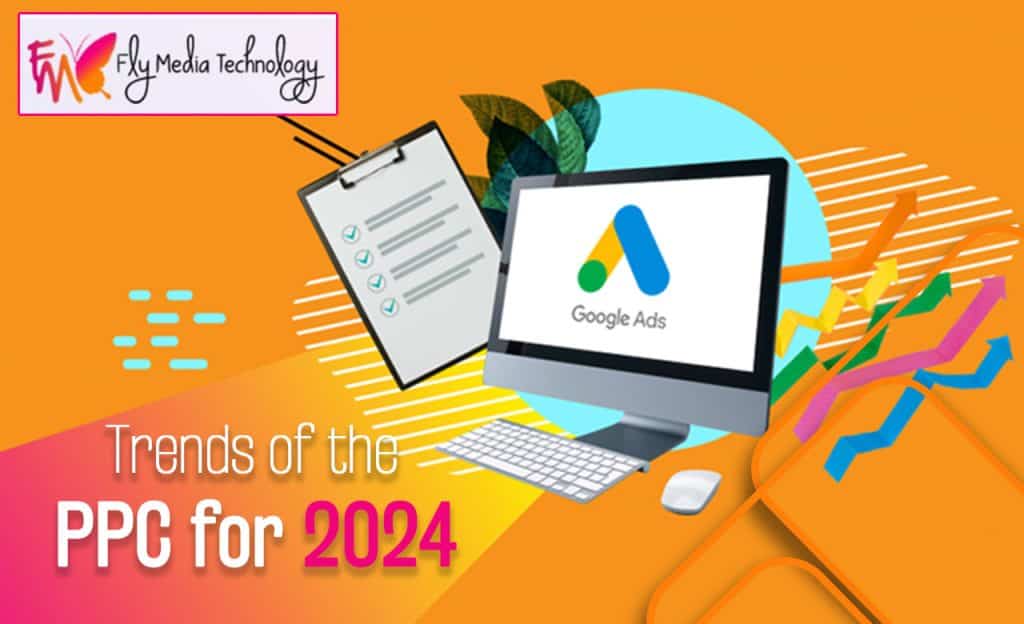Step by Step Guide to Launching Your Business Blog.

![]()
A business blog is a segment of a website that is updated frequently with articles, posts or entries on the industry, products, services or other pertinent subjects to offer helpful information, insights, updates or commentary. Business blogs are frequently used as a marketing strategy to build thought leadership, draw in new readers, interact with current readers and enhance search engine optimization by creating original, pertinent material. What is the definition of a business blog? A business blog is a content marketing platform where articles, news and details about the firm’s products and services can be posted. This aim is to develop relationships with consumers to improve their perception of the company. Different AI tools are used in business blogs, and these AI tools follow Google’s trends in SEO and content marketing. The best companies for content marketing in Ludhiana. Steps to start business blogging. A few stages are involved in getting started to ensure a business blog’s success. Here’s a broad overview: Establish your objectives: Knowing your goals will help you plan the content and tactics for your blog. Determine who your target market is: Recognise the characteristics and interests of your target audience. Examine their preferences, pain points, demographics and any queries they might have about your business or products. Pick a Blogging Platform: Opt for a blogging platform based on your technical skills and needs. Squarespace, Medium, WordPress, and Blogger are well-liked choices. Establish Your Blog: Choose a platform, create an account, and begin creating your blog. Adjust the layout, branding, and style to reflect the unique personality of your business. Prepare your content strategy: Make a plan outlining the subjects, themes and horns you want to cover in your blog entries. To find pertinent subjects and make your content search engine optimized, think about performing research. Provide high-quality content: Get started writing and posting blog entries that will benefit your readers. Aim to provide them with high-quality, entertaining, educational, or problem-solving information that meets their demands. Promote Your Blog: To get more exposure and readers, share your blog entries on your company’s email newsletters, social media accounts, and other marketing platforms. Measure and Analyze Performance: To determine how successful your blog is, keep an eye on essential indicators like website traffic, engagement, conversion rates, and social shares. Iterate and improve: Constantly assess and enhance your blog approach in light of audience input, performance statistics and shifts in the market. What are the benefits of business blogs? Companies in a wide range of industries can profit significantly from business blogs. The following are some of the main benefits: Improved Website Traffic: Regularly posting excellent material on your blog will increase the number of people who find your website through search engine optimization, social media shares, and backlinks from other websites. Enhanced SEO: Over time, blogs can help you rank higher in search results by allowing you to target industry-relevant keywords and phrases. Establishing Authority and Expertise: You may set your company as a thought leader in your industry or specialty by giving insightful information, knowledge, and experience. Developing relationships with customers: Blogs let you communicate more directly and personally with your readers; you may build relationships with your customers and create a feeling of community by promoting social sharing, comments and feedback. Creating leads and conversations: By addressing potential customer’s pain points, responding to their inquiries and offering solutions to their issues, well-written blog content can guide them through the sales funnel. Cost-Effective Marketing: Running a business blog is cheaper than traditional advertising platforms. You do not have to spend a fortune to reach a large audience with the correct plan and execution. In this digital world, people use digital marketing to promote their business. Contact the best digital marketing in Punjab, Flymedia Technology.
8 Common Robots.txt Issues And How To Fix Them

![]()
In this contemporary epoch, humans rely mostly on search engines to gain knowledge about any topic. Here, Robots.txt acts as a catalyst in managing and instructing search engine crawlers on how to crawl over a particular website. As every coin has two sides, similarly Robot.txt has some issues that need to be addressed. So, 8 common Robot.txt issues along with the methods to fix them are as follows: 1.Robots.txt Not In The Root Directory Search robots fail to discover the files which are not in the root folders. To avoid this issue, make sure you move your file in the root directory. 2. Inappropriate usage of wildcards Robot.txt only allows two wildcards * representing instances of a valid character $ representing the end of a URL To overcome this issue, make sure you minimise the usage of wildcards as poor placement of these wildcards could block your entire file. 3. Noindex In Robots.txt Google has already stopped obeying the Noindex rules so avoid using such files and if you still use such files, they are generally indexed. To overcome this issue, one can shift to alternatives of Noindex available. One of such examples is the robots meta tag which can be added to the head of a webpage to avoid indexing on google. 4. Blocked scripts and stylesheets It generally seems logical to block crawler access to external JavaScripts and cascading style sheets (CSS). However, remember that Googlebot needs access to CSS and JS files to “see” your HTML and PHP pages correctly. To overcome this obstacle, remove the line from your robots.txt file that is blocking access. 5.Avoid XML Sitemap URL One can include the URL of XML sitemap in the robots.txt file. One can tackle the situation by omitting a sitemap as it would not negatively affect the actual core functionality and appearance of the website 6. Accessibility to development sites Blocking crawlers from your live website is not a good idea, but so is not allowing them to crawl and index your under development pages. In case you see this when you shouldn’t (or don’t see it when you should), make the required changes to your robots.txt file and check that your website’s search appearance updates accordingly. 7. Usage of absolute URLs Using relative paths in the robots.txt file is the recommended approach for indicating which parts of a site should not be accessed by crawlers. One way to tackle this issue is while using an absolute URL, there’s no guarantee that crawlers will interpret it as intended and that the disallow/allow rule will be followed. 8. Deprecated & Unsupported Elements Bing still supports crawl-delay, Google doesn’t, but it is often specified by webmasters. You used to be able to set crawl settings in Google Search Console, but this was removed towards the end of 2023. It is seen that this was not a widely supported or standardised practice, and the preferred method for noindex was to use on-page robots, or x-robots measures at a page level.
What is the definition of the Robot. Txts?

![]()
A text file called robot.txt is stored on a website’s server to provide instructions to online robots about how to navigate its pages. It is also known as the robots exclusion protocol or the robots.txt protocol. A robots.txt file is primarily used to tell web crawlers what website sections should be indexed or crawled and what parts should be disregarded. Robot. txts are beneficial for SEO, and there are several friendly tips for new users of SEO. Some critical factors of robots. txts. The following are essential features of robots.txt files: Content: A robots.txt file comprises one or more directives, each giving web spiders specific instructions. User-agent designates the web crawler to which the rule applies, and Disallow, which lists the URLs that shouldn’t be crawled, are common directives. User-agent: The web crawler or user agent to which the following rules are applicable is specified by this directive. For instance, whereas User-agent applies to all crawlers, User-agent: Googlebot would apply regulations only to Google’s crawler. Disallow: This directive lists the URLs the designated user agent is not supposed to crawl. Disallow: instructs crawlers, for instance, not to crawl any URLs that begin with private. Allow: This directive lists URLs permitted to be crawled even when a more general rule prohibits crawling in a specific directory. It serves as an exception to any Disallow directives. Sitemap: To provide the location of the website’s XML sitemap, specific robots.txt files contain a Sitemap directive. Having a sitemap is unnecessary, but it might make it easier for search engines to find and index the pages on your website. Comments: Crawlers treat lines that start with “#” as comments and ignore them. The robots.txt file can be annotated for human readers using comments. The most common issues of Robot. Txts. The following are the most typical problems with robots.txt files: Syntax errors: If the robots.txt file has errors, web crawlers may be unable to understand the instructions properly. Missing or rearranged characters, improper formatting, and invalid directives are common syntax problems. Essential Pages: Search engines may be unable to crawl and index vital content on your website if you unintentionally block critical pages or sections. Regularly checking the robots.txt file is necessary to ensure it does not unintentionally prevent access to important pages like home, product, or category pages. Incorrect User-agent Directives: When user-agent directives are misconfigured, it might have unexpected effects, such as permitting or prohibiting access to crawlers that should be handled differently. Image Files: Preventing search engine bots from correctly rendering and indexing web pages can be achieved by blocking access to CSS, JavaScript, or image files. Permitting access to these resources might enhance the website’s overall crawlability and user experience, even though they might need to be indexed. Blocking Search Engine Crawlers: You can keep your website from being indexed in search engine results pages by unintentionally preventing search engine crawlers like Googlebot or Bingbot from visiting it. Absence of a Sitemap Reference: Search engine crawlers may find it easier to locate and efficiently crawl pages if the robots.txt references the web XML sitemap. People prefer digital platforms to promote their business through SEO and content writing in this digital era. Flymedia Technology is the best SEO company in Ludhiana.
YouTube Algorithm Myths,Variables and Marketing Strategies.

![]()
The YouTube algorithm is constantly changing, so it’s vital to remember that the company may change its algorithms to enhance user experience, resolve issues, or achieve business objectives. Furthermore, YouTube has yet to make public the precise weighting and implementation of these factors, even though they are thought to impact the algorithm. Same as Google algorithm, youtube algorithm is also important. Several vital variables that are thought to affect the recommendation of videos Although YouTube retains proprietary information regarding the algorithm’s workings, the following essential variables are thought to play a role in the recommendation of videos: Watch History: YouTube considers the videos you have previously viewed and your interactions with them. Relevance: By examining video content, titles, descriptions, and tags, the algorithm attempts to match videos to users’ interests. Engagement: Videos will likely be recommended more frequently if they receive more likes, comments, shares, and views. Watch Time: Videos that entice viewers to stay on the site longer are given top priority on YouTube. Longer-watching videos are frequently provided with more promotion. User Behavior: YouTube takes into account how users respond to recommendations, including whether or not they click on or disregard the videos that are suggested. Freshness: New videos and recent uploads are frequently given precedence to maintain the platform’s dynamic and current content. Metadata: A video’s visibility can be increased by optimizing its titles, description and tags with pertinent keywords. User Preferences: To tailor recommendations, YouTube may consider demographic data like age, location, and preferred language. Duration of Session: YouTube attempts to prolong the duration of users’ sessions by suggesting a sequence of videos that will likely be interesting, resulting in a continuous viewing experience. Quality: Videos that are compelling, well-made, and of a high caliber may rank higher on YouTube. Myths about YouTube algorithm There are several false beliefs and myths regarding the YouTube algorithm. Engagement Baiting: Some content producers think that by obtrusively requesting likes, comments, or subscriptions on their videos, their visibility in the algorithm will increase. Click baiting: Although attention-grabbing titles and thumbnails might entice viewers to click through if the video falls short of expectations, they might leave quickly, cutting down on time. Upload Frequency: It is a common misperception that uploading more frequently will inevitably lead to higher views and improved algorithm performance. Sub4Sub and View4View: Some content producers use sub4sub or view4view techniques to increase their views and subscriber counts fictitiously. These strategies do not produce real interaction or sustained success and might even be against YouTube’s community standards. Keyword Stuffing: While it’s necessary to add pertinent keywords to video descriptions, tags, and titles to increase discoverability, stuffing these elements with too many keywords at once can work against you and get you penalized by the algorithm. The Golden Hour: According to some content producers, videos work best when posted during a specific period known as the golden hour. Long-term success on the platform is more heavily dependent on the overall quality and relevance of the content. Length of Videos: It’s a common misperception that videos with more length consistently rank higher in the algorithm. Even though watch time is a crucial metric, longer videos should emphasize retaining viewers’ attention and providing value. Algorithmic Manipulation: Many things need to be corrected regarding how to trick YouTube’s algorithm to increase performance and visibility. YouTube uses advanced algorithms to identify and penalize this behavior. The YouTube algorithm is beneficial for YouTube marketing. Flymedia Technology is the best IT company for YouTube marketing in Punjab, and digital marketing properly follows the myths about the YouTube algorithm.
ਕਿਉਂ ਡਿਜੀਟਲ ਮਾਰਕੀਟਿੰਗ ਦੀ ਏਨੀ ਮੰਗ ਹੈ ? ਕੀ ਹੈ ਇਸਦੀ ਖ਼ਾਸਿਯਤ ?

![]()
ਅਕਸਰ ਦੇਖਣ ਵਿੱਚ ਆਉਂਦਾ ਹੈ ਕਿ ਡਿਜੀਟਲ ਮਾਰਕੀਟਿੰਗ ਦਾ ਪੱਧਰ ਇਨ੍ਹਾਂ ਵੱਧ ਚੁਕਾ ਹੈ ਕੇ ਇਸਨੇ ਰਵਾਇਤੀ(traditional) ਮਾਰਕੀਟ ਨੂੰ ਵੀ ਮਾਤ ਪਾ ਦਿੱਤੀ ਹੈ। ਹਰ ਇਨਸਾਨ ਆਪਣੇ ਆਪ ਨੂੰ ਇਸ ਪਲੇਟਫਾਰਮ ਵਿੱਚ ਵੇਖਣਾ ਪਸੰਦ ਕਰਦਾ ਹੈ।ਆਉਣ ਆਲੇ ਸਮੇਂ ਵਿੱਚ ਸਾਰਾ ਕੁਝ ਡਿਜੀਟਲ ਮਾਰਕੀਟਿੰਗ ਦੇ ਹਿਸਾਬ ਨਾਲ ਚੱਲਣ ਦੇ ਆਸਰ ਲੱਗ ਰਹੇ ਹਨ।ਪਰ ਕਿ ਸਭਨੂੰ ਇਹਦੀ ਪੂਰੀ ਜਾਣਕਾਰੀ ਹੈ ?ਆਓ ਜਾਣੋ ਕਿਵੇਂ ਕਰ ਸਕਤੇ ਹੋ ਇਸਦੀ ਸ਼ੁਰੂਵਾਤ ਅਤੇ ਇਸ ਵਿੱਚ ਤਰੱਕੀ ? ਡਿਜੀਟਲ ਮਾਰਕੀਟਿੰਗ ਨੂੰ ਔਨਲਾਈਨ ਮਾਰਕੀਟ ਵੀ ਕਿਹਾ ਜਾਂਦਾ ਹੈ ਜਿਸਨੂੰ ਤੁਸੀ ਆਪਣੇ ਕੰਪਿਊਟਰ, ਫੋਨ, ਟੈਬਲੇਟ ਜਾ ਕਿਸੇ ਹੋਰ ਜੰਤਰ ਤੇ ਵੀ ਚਲਾ ਸਕਤੇ ਹੋ। ਇਹ ਔਨਲਾਈਨ ਵੀਡੀਓ, ਡਿਸਪਲੇ ਵਿਗਿਆਪਨ, ਖੋਜ ਇੰਜਨ ਮਾਰਕੀਟਿੰਗ, ਭੁਗਤਾਨ ਕੀਤੇ ਸੋਸ਼ਲ ਵਿਗਿਆਪਨ ਅਤੇ ਸੋਸ਼ਲ ਮੀਡੀਆ ਪੋਸਟਾਂ ਸਮੇਤ ਬਹੁਤ ਸਾਰੇ ਹੋਰ ਰੂਪ ਲੈ ਸਕਦਾ ਹੈ।ਇੱਕ ਡਿਜੀਟਲ ਮਾਰਕੀਟਿੰਗ ਰਣਨੀਤੀ ਤੁਹਾਨੂੰ ਮੌਜੂਦਾ ਗਾਹਕਾਂ ਅਤੇ ਤੁਹਾਡੇ ਉਤਪਾਦਾਂ ਜਾਂ ਸੇਵਾਵਾਂ ਵਿੱਚ ਦਿਲਚਸਪੀ ਰੱਖਣ ਵਾਲੇ ਵਿਅਕਤੀਆਂ ਨਾਲ ਜੁੜਨ ਲਈ ਵੱਖ-ਵੱਖ ਡਿਜੀਟਲ ਚੈਨਲਾਂ-ਜਿਵੇਂ ਕਿ ਸੋਸ਼ਲ ਮੀਡੀਆ, ਪੇ-ਪ੍ਰਤੀ-ਕਲਿੱਕ, ਖੋਜ ਇੰਜਨ ਔਪਟੀਮਾਈਜੇਸ਼ਨ, ਅਤੇ ਈਮੇਲ ਮਾਰਕੀਟਿੰਗ ਦਾ ਲਾਭ ਲੈਣ ਦੀ ਇਜਾਜ਼ਤ ਦਿੰਦੀ ਹੈ। ਨਤੀਜੇ ਵਜੋਂ, ਤੁਸੀਂ ਇੱਕ ਬ੍ਰਾਂਡ ਬਣਾ ਸਕਦੇ ਹੋ, ਇੱਕ ਵਧੀਆ ਗਾਹਕ ਅਨੁਭਵ ਪ੍ਰਦਾਨ ਕਰ ਸਕਦੇ ਹੋ, ਸੰਭਾਵੀ ਗਾਹਕਾਂ ਨੂੰ ਲਿਆ ਸਕਦੇ ਹੋ। ਹਾਂ, ਡਿਜੀਟਲ ਮਾਰਕੀਟਿੰਗ ਪੇਸ਼ੇਵਰਾਂ(professionals)ਲਈ ਇੱਕ ਉੱਚ ਮੰਗ ਹੈ, ਅਤੇ ਇਹ ਮੰਗ ਦੀ ਆਉਣ ਵਾਲੇ ਸਾਲਾਂ ਵਿੱਚ ਵਧਣ ਦੀ ਉਮੀਦ ਹੈ। ਕਾਰੋਬਾਰ ਆਪਣੇ ਨਿਸ਼ਾਨੇ ਵਾਲੇ ਦਰਸ਼ਕਾਂ ਤੱਕ ਪਹੁੰਚਣ ਅਤੇ ਉਨ੍ਹਾਂ ਦੀਆਂ ਵਸਤੂਆਂ ਜਾਂ ਸੇਵਾਵਾਂ ਦੀ ਮਾਰਕੀਟਿੰਗ ਕਰਨ ਲਈ ਔਨਲਾਈਨ ਮਾਰਕੀਟਿੰਗ ਦੀ ਵੱਧ ਰਹੀ ਮਹੱਤਤਾ ਦੇ ਕਾਰਨ ਡਿਜੀਟਲ ਮਾਰਕੀਟਿੰਗ ਵਿੱਚ ਵਧੇਰੇ ਨਿਵੇਸ਼ ਕਰ ਰਹੇ ਹਨ। ਡਿਜੀਟਲ ਮਾਰਕੀਟਿੰਗ ਦੀ ਖ਼ਾਸਿਯਤ ਹੈ ਕਿ ਇਹ ਬ੍ਰਾਂਡਾਂ(brands) ਨੂੰ ਉਹਨਾਂ ਦੇ ਟੀਚੇ(peak) ਵਾਲੇ ਦਰਸ਼ਕਾਂ(consumers) ਤੱਕ ਪਹੁੰਚਣ ਅਤੇ ਉਹਨਾਂ ਦੇ ਉਤਪਾਦ(product) ਜਾਂ ਸੇਵਾ(service) ਨੂੰ ਉਤਸ਼ਾਹਿਤ ਕਰਨ ਵਿੱਚ ਮਦਦ ਕਰਦੀ ਹੈ। ਜਦੋਂ ਕਿ ਇਹ ਇੱਕ ਰਵਾਇਤੀ ਮਾਰਕੀਟਿੰਗ ਮੁਹਿੰਮ(campaign) ਦਾ ਟੀਚਾ ਵੀ ਹੈ, ਡਿਜੀਟਲ ਮਾਰਕੀਟਿੰਗ ਬ੍ਰਾਂਡਾਂ ਨੂੰ ਵਧੇਰੇ ਖਾਸ ਜਾਂ ਖਾਸ ਦਰਸ਼ਕਾਂ ਨੂੰ ਨਿਸ਼ਾਨਾ ਬਣਾਉਣ ਦੀ ਆਗਿਆ ਦਿੰਦੀ ਹੈ।ਗਾਹਕਾਂ ਨਾਲ ਡਿਜੀਟਲ ਤੌਰ ‘ਤੇ ਜੁੜਨਾ ਇੱਕ ਵਿਸ਼ਾਲ ਦਰਸ਼ਕ ਬਣਾਉਣ ਵਿੱਚ ਮਦਦ ਕਰਦਾ ਹੈ ਜੋ ਤੁਹਾਡੇ ਬ੍ਰਾਂਡ ‘ਤੇ ਭਰੋਸਾ ਕਰਦੇ ਹਨ। ਇਹ ਖਾਸ ਤੌਰ ‘ਤੇ ਛੋਟੇ ਕਾਰੋਬਾਰਾਂ ਲਈ ਲਾਭਦਾਇਕ ਹੈ, ਜੋ ਕਿਸੇ ਮਾਰਕੀਟਿੰਗ ਵਿਭਾਗ ਜਾਂ ਏਜੰਸੀ ਦੀ ਮਦਦ ਤੋਂ ਬਿਨਾਂ ਆਸਾਨੀ ਨਾਲ ਡਿਜੀਟਲ ਮਾਰਕੀਟਿੰਗ ਰਣਨੀਤੀਆਂ(strategies) ਦਾ ਲਾਭ ਲੈ ਸਕਦੇ ਹਾਂ । ਡਿਜੀਟਲ ਮਾਰਕੀਟਿੰਗ ਕਾਰਕਾਂ ਦੇ ਸੁਮੇਲ(combination) ਕਾਰਨ ਤੇਜ਼ੀ ਨਾਲ ਵਿਕਾਸ ਦਾ ਅਨੁਭਵ ਕਰ ਰਹੀ ਹੈ, ਜਿਸ ਵਿੱਚ ਸ਼ਾਮਲ ਹਨ:- ਇੰਟਰਨੈੱਟ ਦੀ ਵਿਆਪਕ ਵਰਤੋਂ : ਵਧਦੀ ਗਲੋਬਲ ਇੰਟਰਨੈਟ ਪ੍ਵੇਸ਼ ਦਾ ਮਤਲਬ ਹੈ ਕਿ ਜ਼ਿਆਦਾ ਲੋਕ ਔਨਲਾਈਨ ਹਨ, ਜੋ ਕਿ ਡਿਜੀਟਲ ਮਾਰਕੀਟਿੰਗ ਯਤਨਾਂ(efforts)ਲਈ ਇੱਕ ਵਿਸ਼ਾਲ ਅਤੇ ਪਹੁੰਚਯੋਗ ਦਰਸ਼ਕ ਪ੍ਰਦਾਨ ਕਰਦੇ ਹਨ। ਡਿਵਾਈਸਾਂ ਦੀ ਪਹੁੰਚਯੋਗਤਾ : ਸਮਾਰਟਫ਼ੋਨਾਂ ਅਤੇ ਹੋਰ ਜੁੜੀਆਂ ਡਿਵਾਈਸਾਂ ਦੇ ਪ੍ਸਾਰ ਦੇ ਨਾਲ, ਉਪਭੋਗਤਾਵਾਂ ਦੀ ਇੰਟਰਨੈਟ ਤੱਕ ਨਿਰੰਤਰ ਪਹੁੰਚ ਹੁੰਦੀ ਹੈ, ਜਿਸ ਨਾਲ ਮਾਰਕਿਟਰਾਂ ਲਈ ਵੱਖ-ਵੱਖ ਡਿਜੀਟਲ ਚੈਨਲਾਂ ਰਾਹੀਂ ਉਹਨਾਂ ਤੱਕ ਪਹੁੰਚਣਾ ਆਸਾਨ ਹੋ ਜਾਂਦਾ ਹੈ। ਨਿਸ਼ਾਨਾ ਵਿਗਿਆਪਨ: ਡਿਜੀਟਲ ਮਾਰਕੀਟਿੰਗ ਜਨਸੰਖਿਆ(population), ਦਿਲਚਸਪੀਆਂ, ਵਿਹਾਰਾਂ ਅਤੇ ਹੋਰ ਕਾਰਕਾਂ ਦੇ ਆਧਾਰ ‘ਤੇ ਸਹੀ ਨਿਸ਼ਾਨਾ ਬਣਾਉਣ ਦੀ ਇਜਾਜ਼ਤ ਦਿੰਦੀ ਹੈ। ਇਹ ਵਿਗਿਆਪਨ ਮੁਹਿੰਮਾਂ ਦੀ ਕੁਸ਼ਲਤਾ(efficiency) ਨੂੰ ਵਧਾਉਂਦਾ ਹੈ ਅਤੇ ਵਿਅਰਥ ਵਿਗਿਆਪਨ ਖਰਚ ਨੂੰ ਘਟਾਉਂਦਾ ਹੈ। ਸੰਖਿਆਤਮਕ ਨਤੀਜੇ: ਡਿਜੀਟਲ ਮਾਰਕੀਟਿੰਗ ਡੇਟਾ ਅਤੇ ਵਿਸ਼ਲੇਸ਼ਣ(analysis) ਤੱਕ ਤੁਰੰਤ ਪਹੁੰਚ ਦੀ ਪੇਸ਼ਕਸ਼ ਕਰਦੀ ਹੈ, ਮਾਰਕਿਟਰਾਂ ਨੂੰ ਮੁਹਿੰਮ ਪ੍ਦਰਸ਼ਨ ਦੀ ਸਹੀ ਨਿਗਰਾਨੀ ਕਰਨ ਲਈ ਸ਼ਕਤੀ ਪ੍ਰਦਾਨ ਕਰਦੀ ਹੈ। ਇਹ ਡਾਟਾ-ਸੰਚਾਲਿਤ(data driven) ਪਹੁੰਚ ਉਹਨਾਂ ਨੂੰ ਸੂਚਿਤ ਫੈਸਲੇ ਲੈਣ ਅਤੇ ਅਸਲ ਸਮੇਂ ਵਿੱਚ ਰਣਨੀਤੀਆਂ ਨੂੰ ਅਨੁਕੂਲ(favourable) ਬਣਾਉਣ ਦੇ ਯੋਗ ਬਣਾਉਂਦਾ ਹੈ। ਲਾਗਤ-ਪ੍ਰਭਾਵੀ(cost effective): ਡਿਜੀਟਲ ਮਾਰਕੀਟਿੰਗ ਅਕਸਰ ਰਵਾਇਤੀ ਮਾਰਕੀਟਿੰਗ ਵਿਧੀਆਂ ਦੇ ਮੁਕਾਬਲੇ ਨਿਵੇਸ਼ ‘ਤੇ ਬਿਹਤਰ ਵਾਪਸੀ (ROI) ਦੀ ਪੇਸ਼ਕਸ਼ ਕਰਦੀ ਹੈ। ਇਹ ਵਧੇਰੇ ਲਾਗਤ-ਪ੍ਰਭਾਵਸ਼ਾਲੀ ਹੋ ਸਕਦਾ ਹੈ, ਖਾਸ ਕਰਕੇ ਸੀਮਤ ਬਜਟ(limited budget) ਵਾਲੇ ਛੋਟੇ ਕਾਰੋਬਾਰਾਂ ਲਈ। ਗਲੋਬਲ ਪਹੁੰਚ: ਡਿਜੀਟਲ ਮਾਰਕੀਟਿੰਗ ਗਲੋਬਲੀ ਸੀਮਾਵਾਂ ਤੋਂ ਪਾਰ ਹੋ ਜਾਂਦੀ ਹੈ, ਜਿਸ ਨਾਲ ਕਾਰੋਬਾਰਾਂ ਲਈ ਕਈ ਥਾਵਾਂ ‘ਤੇ ਭੌਤਿਕ ਮੌਜੂਦਗੀ(physical presence) ਦੀ ਲੋੜ ਤੋਂ ਬਿਨਾਂ ਵਿਸ਼ਵਵਿਆਪੀ(worldwide)ਦਰਸ਼ਕਾਂ ਤੱਕ ਪਹੁੰਚਣਾ ਸੰਭਵ ਹੋ ਜਾਂਦਾ ਹੈ। ਖਪਤਕਾਰਾਂ(consumers)ਲਈ ਸਹੂਲਤ: ਖਪਤਕਾਰ ਆਨਲਾਈਨ ਖਰੀਦਦਾਰੀ ਦੀ ਸਹੂਲਤ ਅਤੇ ਜਾਣਕਾਰੀ ਤੱਕ ਆਸਾਨੀ ਨਾਲ ਪਹੁੰਚਣ ਦੇ ਲਈ ਧੰਨਵਾਦ ਕਰਦੇ ਹਨ। ਡਿਜੀਟਲ ਮਾਰਕੀਟਿੰਗ ਇਹਨਾਂ ਤਰਜੀਹਾਂ(preferences) ਨੂੰ ਪੂਰਾ ਕਰਦੀ ਹੈ, ਜਿਸ ਨਾਲ ਇਹ ਸੰਭਾਵਨਾ ਵੱਧ ਜਾਂਦੀ ਹੈ ਕਿ ਉਪਭੋਗਤਾ ਆਨਲਾਈਨ ਬ੍ਰਾਂਡਾਂ ਨਾਲ ਜੁੜਨਗੇ। ਉਪਭੋਗਤਾ ਵਿਵਹਾਰ ਨੂੰ ਬਦਲਣਾ: ਉਪਭੋਗਤਾ ਵਿਵਹਾਰ ਡਿਜੀਟਲ ਪਰਸਪਰ ਪ੍ਭਾਵ, ਔਨਲਾਈਨ ਖੋਜ ਅਤੇ ਔਨਲਾਈਨ ਖਰੀਦਦਾਰੀ ਦੀ ਸਹੂਲਤ ਲਈ ਤਰਜੀਹ ਦੇ ਨਾਲ ਵਿਕਸਿਤ(developed) ਹੋਇਆ ਹੈ।
What is the definition of the PPC?

![]()
Pay-per-click advertising is a model where advertisers only pay when users click on their ads. Though it also refers to display and social media advertising platforms where marketers pay for ad placement based on clicks or impressions, PPC advertising is most typically linked with search engine advertising. What does PPC mean? Advertisers using the Pay-Per-Click digital advertising strategy are charged a fee each time their ad is clicked. It’s a means of purchasing website views instead of trying to obtain them naturally using strategies like search engine optimization. Advertisers bid on particular keywords pertinent to their target market in a PPC campaign. The advertiser’s ad can show up high in the search results when people type in such keywords into search engines like Google or Bing. What are the trends of the PPC? The term PPC trends describes how PPC (Pay-Per-Click) advertising develops in terms of patterns, tactics, and technologies. PPC trends cover a range of topics related to paid search marketing, such as but not restricted to: Technological Advancements: Modifications and inventions in pay-per-click systems, like social network advertising platforms, Bing Ads, and Google Ads, along with more features, tools, and capacities for advertisers. Consumer behavior: Consumer behavior refers to changes in how people use search engines and online advertisements, which impact metrics measuring ad engagement, device usage, and search intent. Ad Forms and Creative Strategies: New developments in ad forms, including interactive ad units, responsive search advertisements, and video ads, and creative best practices to maximize user experience and ad effectiveness. Audience targeting: The ability to target specific user groups with appropriate ads through lookalike audiences, remarketing, interest-based targeting, and demographic targeting is known as Audience targeting. Automation and AI: Automation technologies and AI-driven solutions for bid management, ad optimization, audience segmentation, and performance analysis are becoming more widely used to improve campaign efficiency and efficacy. AI has several benefits in SEO and content marketing, which also follow Google’s trends. Privacy and Regulation: The effects of privacy laws on data collection, targeting strategies, and measurement techniques in pay-per-click advertising, including the GDPR, CCPA, and modifications to browser policy. Cross-Channel Integration: Methods to build unified and customized user experiences across many touchpoints by combining PPC campaigns with other digital marketing channels, including social media, email marketing, and content marketing. Attribution modeling: The development of attribution models and methodology over time has allowed for the precise measurement of the contribution of different marketing channels and touchpoints throughout the customer journey, which has a bearing on decisions about campaign optimization and budget allocation. Local and Mobile Optimisation: Using mobile-responsive ad formats, location-based targeting, and local search tools like Google My Business, PPC campaigns should be optimized for both local search and mobile devices. Budget Allocation and ROI: Strategies for allocating funds, bidding wars, and ROI measuring techniques that are popular right now to optimize PPC campaign efficacy and meet corporate goals. What are the advantages of being updated with the PPC trends? Maintaining current knowledge of PPC trends has several advantages. Enhanced Campaign Effectiveness: By staying up to date with PPC trends, marketers may take advantage of new features, best practices, and technology to improve the effectiveness of their campaigns. Competitive Advantage: By adjusting to new PPC trends, advertisers can maintain an advantage over rivals who could be slower to adopt new tactics or technologies. Cost-effectiveness: Through automation tools, AI-powered bidding tactics, and sophisticated targeting choices, advertisers may enhance the effectiveness of their PPC campaigns and accomplish their objectives more quickly. Improved Audience Targeting: PPC developments frequently feature improvements in Audience targeting functionalities, enabling marketers to connect with highly relevant audiences according to intent signals, behaviors, interests, and demographics. To be up to date with PPC trends, contact Flymedia Technology. We have PPC Experts in Ludhiana.
What are the AI testing tools?

![]()
Nowadays, people use different artificial intelligence tools to enhance the quality of the content. The computer science discipline of artificial intelligence aims to build machines that can carry out tasks that generally call for human intelligence. Among these are skills like problem-solving, learning from experience, identifying patterns, and comprehending natural language. What is the definition of the AI testing tools? Software applications called artificial intelligence testing tools are made to measure and appraise the effectiveness, dependability and caliber of AI systems and applications. These tools, which include machine learning models, computer vision algorithms and natural language processing systems, are specially designed to handle the unique problems that arise from AI technology. What are the objectives of AI tools? There are several objectives for the AI tools, and these tools are as follows: Functional testing: Verifying that the AI system operates by the defined applicable requirements and acts as anticipated. Verifying the system’s answers entails evaluating a range of scenarios and inputs. Performance testing: Evaluating an AI model and algorithm’s speed, scalability, and resource usage in various scenarios. System performance is improved, and bottlenecks are found with the use of performance testing. Testing accuracy: Testing for accuracy involves confirming the precision and dependability of AI judgements, classifications, and forecasts. Assessing the system’s accuracy entails comparing its outputs to expected or ground truth outcomes. Robustness testing: Testing for robustness involves determining how resistant AI systems are to outside influences, noise, and hostile attacks. Robustness testing aids in locating flaws and vulnerabilities that can result in security breaches or system failures. Bias testing: Identifying and reducing bias in AI models to guarantee just and equitable results for all racial and ethnic groupings. To find and fix biases, bias testing includes examining the model outputs, the training data, and the decision-making procedures. Ethical testing: Ethical testing involves evaluating AI systems’ moral implications and ensuring moral standards and laws are followed. Ethical testing includes assessing the possible effects. Regression testing: Testing for unintentional regressions or alterations in an AI system’s behavior following updates or revisions is known as regression testing. Over time, regression testing contributes to the stability and dependability of the system. Artificial intelligence’s effects on our content marketing plan Several ways impact content marketing. These AI tools follow the Google trends for SEO and Content marketing. There are the best companies for Content Marketing in Ludhiana. Better keyword research and analysis: Artificial intelligence not only finds pertinent keywords, long tail phrases, and new search trends, but it also enables us to comprehend user intent and search trends more deeply. Creating excellent first draft content to expand publication efforts: AI enables us to produce first drafts quickly, giving our writers a great place to start. With more time, they can now concentrate on enhancing and personalizing the material. Hiring an editorial staff and writers with AI assistance: AI-assisted writers, who collaborate closely with AI-powered tools to expedite content development, were brought in to speed things up. We can now combine the best aspects of human and artificial intelligence to create emotionally and AI-driven content. More efficient content distribution and optimization at scale: AI has simplified content distribution for us, allowing for more effective optimization and distribution of material at scale. It has become simpler to adapt information for various platforms and reach a larger audience through email or social media. In this digital world, people use digital marketing to promote their business. Contact the best digital marketing in Punjab, Flymedia Technology.
Redirect Loop And The Ways To Fix It

![]()
With businesses moving to digital platforms by consulting the best digital marketing company in Ludhiana, having a good quality website with great appearance and working has become essential to ensure the growth of your business. However, maintaining the website after it is created is a tough challenge and often invites problems faced by fresher web developers. One of those problems is the redirecting loops in your website that you must have experienced while surfing the internet. Read on to understand about redirecting loops and the ways to fix them. What Does A Redirect Loop Mean? Every webpage has a unique URL that contains the website’s domain name, a few subfolders and the page’s name. Search engines and users use these URLs to access the content of your webpage easily. Generally, the URL of a page is not supposed to change even if it requires some updating or editing, as it allows both the users and the search engines to swiftly access your web page content. However, these changes are sometimes not preventable. When you make changes in the URL, it is essential to make sure that the users can have access to the new location of your content, and this is where the redirect feature comes in, which is used by an SEO company in Ludhiana along with the top SEO principles for utmost impact. The redirect feature, just like its name, takes users looking for information from a specific page and sends them to its new URL. This allows you to click on the same URL you used to access before, but your browser automatically sends you to the new URL. To inform the browser about your permanent transfer of the webpage, the best digital marketing company typically would have to use 301 redirects, a common solution that does not interfere with the user experience associated with your website. However, you can create a redirect loop if you set up a redirect to a new page, but it redirects you back to the old page, creating a loop and preventing the users from accessing the content on your webpage. After identifying the issue, the user’s browser would display a redirect loop error. Their browser will be trapped in an endless loop of redirects due to too many redirects. This means when the user’s browser tries to access one URL, it is sent to another URL, and from there, it is directed back to the previous URL, and the loop continues, creating a redirect loop. As a result, the browser displays the error of too many redirects. How Does This Redirect Loop Occur? The question that arises in the mind after learning about redirecting loops is how your website became the victim of it. A number of issues can cause this issue to occur. For example, you might have an SEO plugin making errors while using redirects. This can occur due to mistakes with the redirect rules you put in the server of your web page configuration, CDN redirect rules, CMS’s redirect manager, or issues with the alignment between the systems. This could happen if you have the previous URL of your website configured in your web server, but for further edits, updates or redirects, you move to the redirect manager within your CMS. Fixing The Redirect Loop You can fix the redirect loop issues by making changes in the following: Cookie settings Clear your cache HTTPS settings Third-party services and plugins Hypertext access file The redirect loop occurring in your website can affect its ranking as the ranking signals are no longer available when the ultimate URL is not resolved, which can impact your SEO efforts by affecting the usability and crawl-ability of your website. These issues can be resolved with the help of the best digital marketing company in Ludhiana and allow your website to work smoothly, catering to a great user experience.
Comprehensive Guide To SEO Silo Structures

![]()
In the dynamic world of technology that keeps evolving daily, online presence is imperative for businesses. People hire digital marketing companies in Ludhiana to stay ahead in the competitive market and leverage its benefits. Digital marketing is widely used and important in the hair plant industry, healthcare, IT and many more industries. SEO (Search Engine Optimisation) is prominently and widely used in digital marketing. In SEO, silo structures are a powerful and strategic method used for organising website content to enhance search engine visibility and user experience. Its approach categorises the content to make it easy to navigate and understand. Understanding SEO Silo Structures. Silo structures refer to categorising the content of the website. It is organised into distinct, thematic categories or ‘silos’. SEO Company in Ludhiana will help you form silo structures for efficient use and measurable results. Each silo focuses on a specific keyword cluster. This helps search engines comprehend the relevance of your website’s content. Different content that is related are grouped within silos, which helps to create a logical infrastructure of the website. It helps search engines comprehend the website’s content and improves its crawlability. SEO is a prominent field; thus, you should know some tips if you are a beginner. Mastering these tips will help you better understand SEO and its components, like silo structures, in detail. How Silos Work? As Silo structures help in organising your website content as per their theme and logic, it helps improve its crawlability. Search Engines like Google perceive such websites as authentic and valuable, which enhances your credibility, ranking and visibility of your website in SERPs. The best digital marketing company in Ludhiana can provide services that help drive results using SEO best practices, including efficient use of silo structures. When creating silo structures, you should carefully hierarchically place the content accordingly to the relevance of the subject with the specific theme or topic. Place highly relevant content at the top and others according to their relevant significance. This helps search engines understand the hierarchy, its contextual relevance and its importance within the silos. This further helps strengthen the ranking of your website. Ensure that you follow a comprehensive guide to SEO maintenance to keep your website visible. Benefits of Using SEO Silos Structures There are several advantages of using SEO silo structures; these benefits are as follows: Increased Relevance Since silos are grouped based on their topics, it increases the relevancy of that particular page to search queries. It increases the likelihood of the individual page ranking high in SERPs for relevant keywords. Thus, an SEO company in Ludhiana uses SEO silo structures to increase the relevance of your website. Enhance Crawlability When content is organised structurally and logically, it becomes easier for search engines crawl the website content. It also helps search engines understand the context, content, and its relevancy. Increases Authority When similar content is grouped in silos, it helps the website gain topical authority making it a reliable and credible website for search engines. Because of this, the visibility and ranking of the website also increases. Better User Experience With the help of silos, the website’s structurestrucwebsite’smes becomes logical and organised, helping the website visitor to navigate through the website easily. They can find relevant content on the topic they are looking for. Thus, consult the best digital marketing company in Ludhiana to make the user experience better by using SEO silo structures. Targeted Keyword Optimisation As each silo focuses on specific content, it provides an opportunity for SEOs to use it for optimising particular keywords and queries. It helps increase the ranking of keywords as per the targeted term. Conclusion SEO silo structures are beneficial for improving the relevance, visibility, and credibility of the website. It structures content logically, making it easier for both the search engine and the user, enhancing user experience. Consult the best SEO company in Ludhiana to use SEO silo structures efficiently and to boost your website ranking.
Jump-Start Your SEO Using These 4 Beginners-Friendly Tips

![]()
In this digital era, it is imperative to have an online presence. Many businesses leverage the benefits of digital marketing to boost their online presence and to get the most out of it. Digital marketing comprises various components that can be used to boost online presence. The best digital marketing company in Ludhiana provides services that help businesses increase their sales and their online presence. A key component of digital marketing is SEO, and it is greatly helpful in increasing the ranking of the website. It has become a prominent field with good scope and a promising future. If you want to learn SEO and are new to this, then stay tuned. The blog provides tips for beginners on SEO. What Is SEO? SEO stands for Search Engine Optimisation and is used to increase the ranking of your website in search engine result pages or (SERPs). SEO aims to generate organic traffic by implementing various effective SEO strategies such as link-building, keyword research, content optimisation, etc. On-page and Off-page SEO are types of SEOs in which organic traffic and ranking increase. Using the SEO principle provides a noticeable impact on improving business visibility. Consult an expert SEO company in Ludhiana to escalate your website ranking. SEO Tips For Beginners If you are a beginner in SEO, ensure to follow the tips mentioned below: Conduct Keyword Research Keyword research is vital in SEO as keywords are the precise words people search for in search engines. Thorough keyword research should be conducted to get the right keywords, which are crucial for driving traffic to your website. Thus, you should learn how to do keyword research and make your content strategy accordingly. Use Both Internal and External Links One of the primary factors of Google to ensure the authenticity of the website is links. Both internal and external links are necessary for boosting the ranking of the website. Internal links are hyperlinks that connect different pages of the same website. On the other hand, external links are also known as backlinks and help connect different websites online. The best digital marketing company in Ludhiana recommends using these links combined. Create SEO OptimisedOptimised Content It is said that content is king in SEO. Content helps the website in various ways, such as making the viewers aware of the products and services, providing information, using them for promotion, etc. Besides this, it can also be used for optimisation. SEO content is content in which keywords are optimised and embedded in the content naturally. You must search for Google trends and how they are used in SEO and content marketing. An SEO company in Ludhiana can help you correctly use and optimise content for better and desired results. Write Original and Plagiarism-Free Content Content has profound importance in SEO and can improve the rankings exceptionally, provided you use it correctly. It is important to write high-quality, original content. Content should not be copied and pasted from other sources as it is unethical, and Google does not rank such content. Further, it reduces the authenticity and credibility of the website. Writing the content correctly can help you in multiple ways, such as boosting your email marketing. Thus, ensure that you write original content that is free of plagiarism. Conclusion SEO is a prominent field that provides great benefits to increase the visibility and ranking of the website. A beginner in this field must learn and excel in keyword research, writing high-quality and original content, optimising content, and using internal and external links. For best results, hire an SEO company in Ludhiana to enhance your website rank and presence online.




